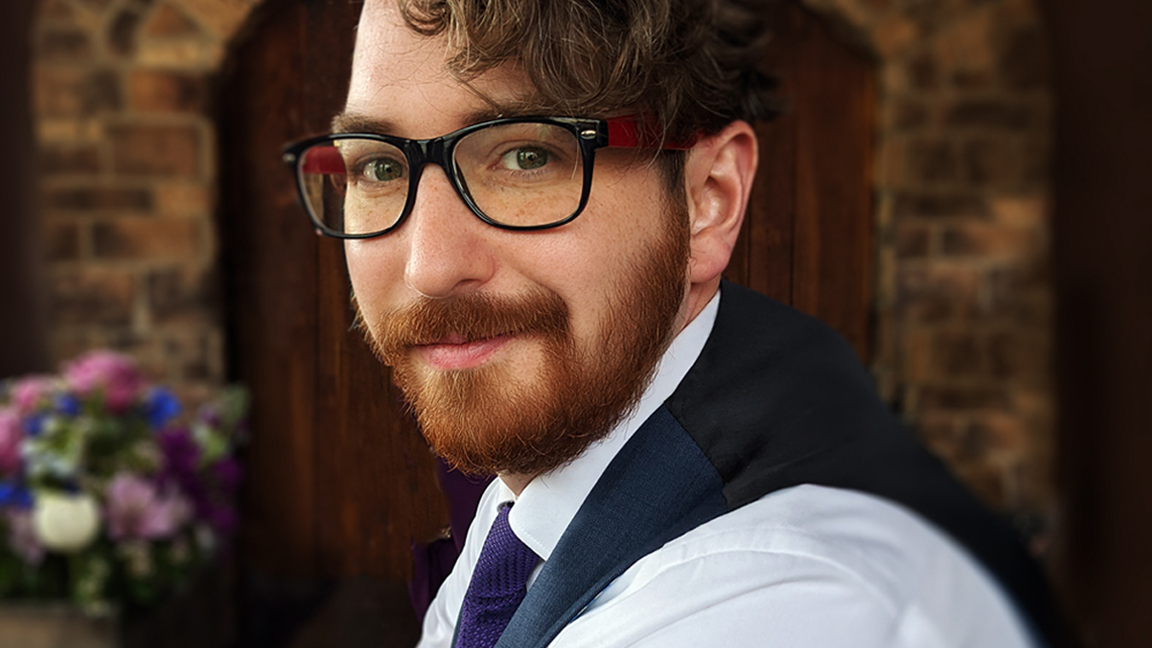
Patrick Lay is a cartoonist, illustrator, educator, and podcaster from Northwest Ohio. He teaches comics as an Adjunct Professor at Columbus College and Art and Design and has been self-publishing since 2014.
Death Strikes: The Emperor of Atlantis is one of the year's most remarkable comic books, and you needn't take my word for it, Neil Gaiman has called this graphic novel "heartbreaking and affecting" and "a reminder of what art is for".
Published by Dark Horse Comics and Berger Books, Death Strikes is a poignant and darkly satrical graphic novel based on a one-act opera written in 1943 by concentration camp prisoners Peter Kien and Viktor Ullmann; the pair never lived to see it performed.
Now, 80 years later, Kien and Ullmann's subversive story of rebellion and the threat of authoritarian regimes resurfaces as the inspiration for writer Dave Maass and illustrator by Patrick Lay's book.
The suppressed opera, Der Kaiser von Atlantis, has inspired Death Strikes and its vision of a world where Atlantis never sank but instead became a technologically advanced fascist state; its emperor declares a global war at the same time as Death goes on strike - everyone fights but no-one dies in a story that recalls the biting best work of Neil Gaiman and Terry Pratchett.
Patrick Lay's black and white digital watercolours are filled with delicate detail, and behind every panel is the DNA of Peter Kien sketches
Turning the ideas of two Czechoslovakia concentration camp victims into a graphic novel that mixes dystopian sci-fi, fantasy and zombie horror would naturally require a deft and sensitive touch. Patrick Lay's black and white art, created digitally and using traditional watercolours and inks, is filled with delicate detail, and behind every panel is the DNA of Peter Kien's sketches, which you can find at the back of the book, along with music notes, photos, art, essays and and more from Kien and Ullmann.
Patrick Lay worked with Richard Bruning and character designer Ezra Rose, whose concept art is also printed at the back of the graphic novel. Below you can read my interview with Patrick, where he discusses his art style, process and the challenge of bringing this unique vision to life.
Death Strikes: The Emperor of Atlantis is out now and can be purchased at Amazon, with more details on the Dark Horse Comics website.
Get the Creative Bloq Newsletter
Daily design news, reviews, how-tos and more, as picked by the editors.
Patrick Lay interview: making Death Strikes
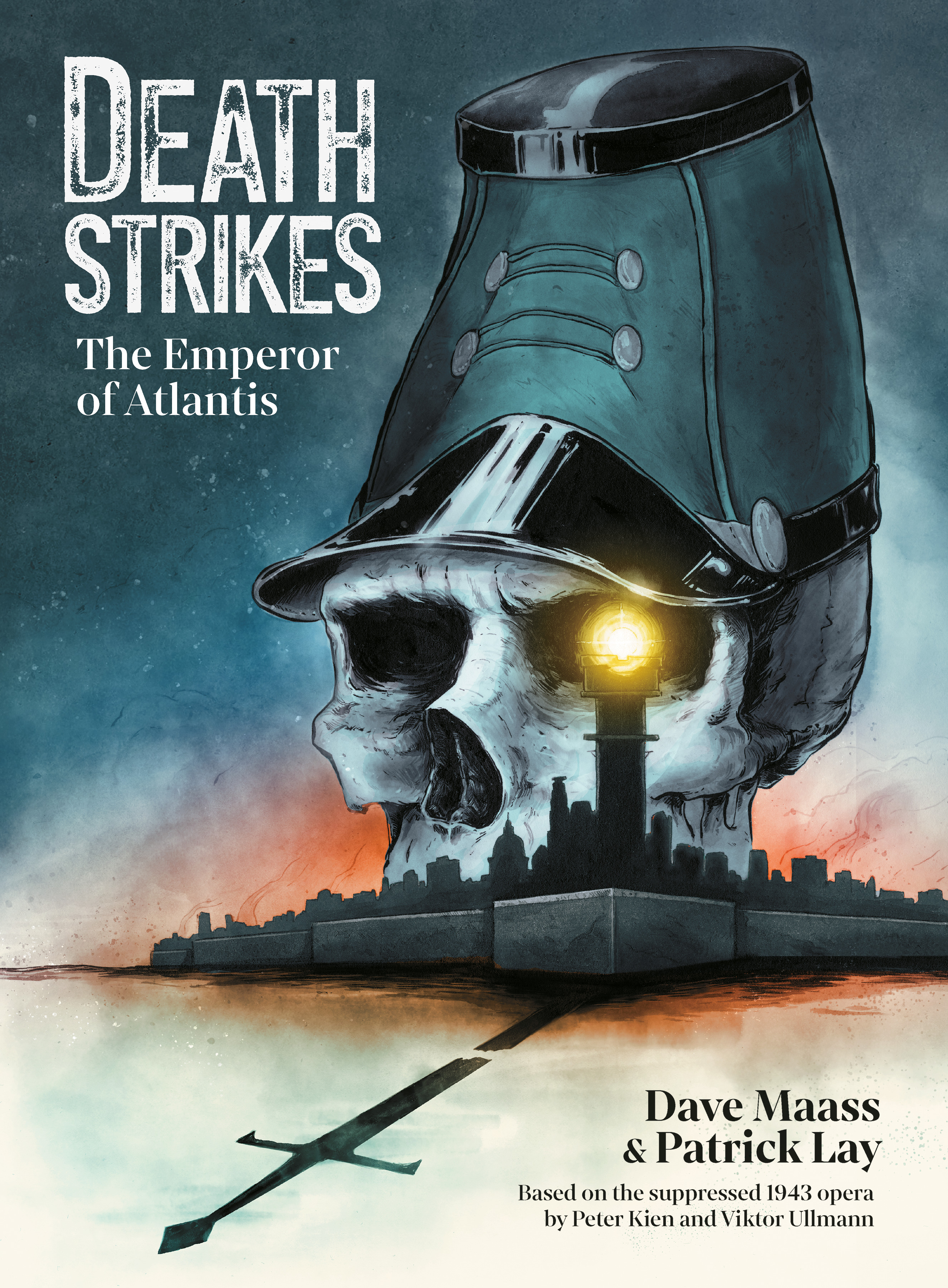
How much of Peter Kien's own art is in the book, and how did you use or interpret it?
"That is a tough question to answer – we didn't include any of Kien's artwork directly in the comic art, although his words are all over it. For the art, we took a layered approach, seeding in compositions from his drawings, adapting his typographical approach for the headings of 'The Old Normal' and 'The New Normal', and using his character design for Death. Kien had a few active styles, including a lovely, organic ink line that he used for portraits while he was imprisoned at Terezin. I tried to keep that line in mind as I moved through the book."
How did the creative process work with character designer Ezra Rose?
"Intimidating [laughs]. I had wonderful artists on all sides working on this book. Peter Kien himself was a powerful observer and lovely artist, even in his commercial work. Ezra Rose also set a huge standard to live up to.
"Ultimately, this kind of work required that I find a way to take the essence of Ezra's designs and make them my own. They were very generous with their research, which really informed the way the costumes were constructed and suggested things about the way Ezra saw the characters' personalities.
"I did have to make departures though – my version of Life is shorter, maybe a touch less mischievous? There is an air of fae around Ezra's sketch that I couldn't quite capture, so I pivoted towards the melodramatic and maybe a little pouty. Emperor Overall also changed, trending older, a little more fleshy. I couldn't explain this one – sometimes the characters become themselves as you draw them over and over and Overall definitely took that route."
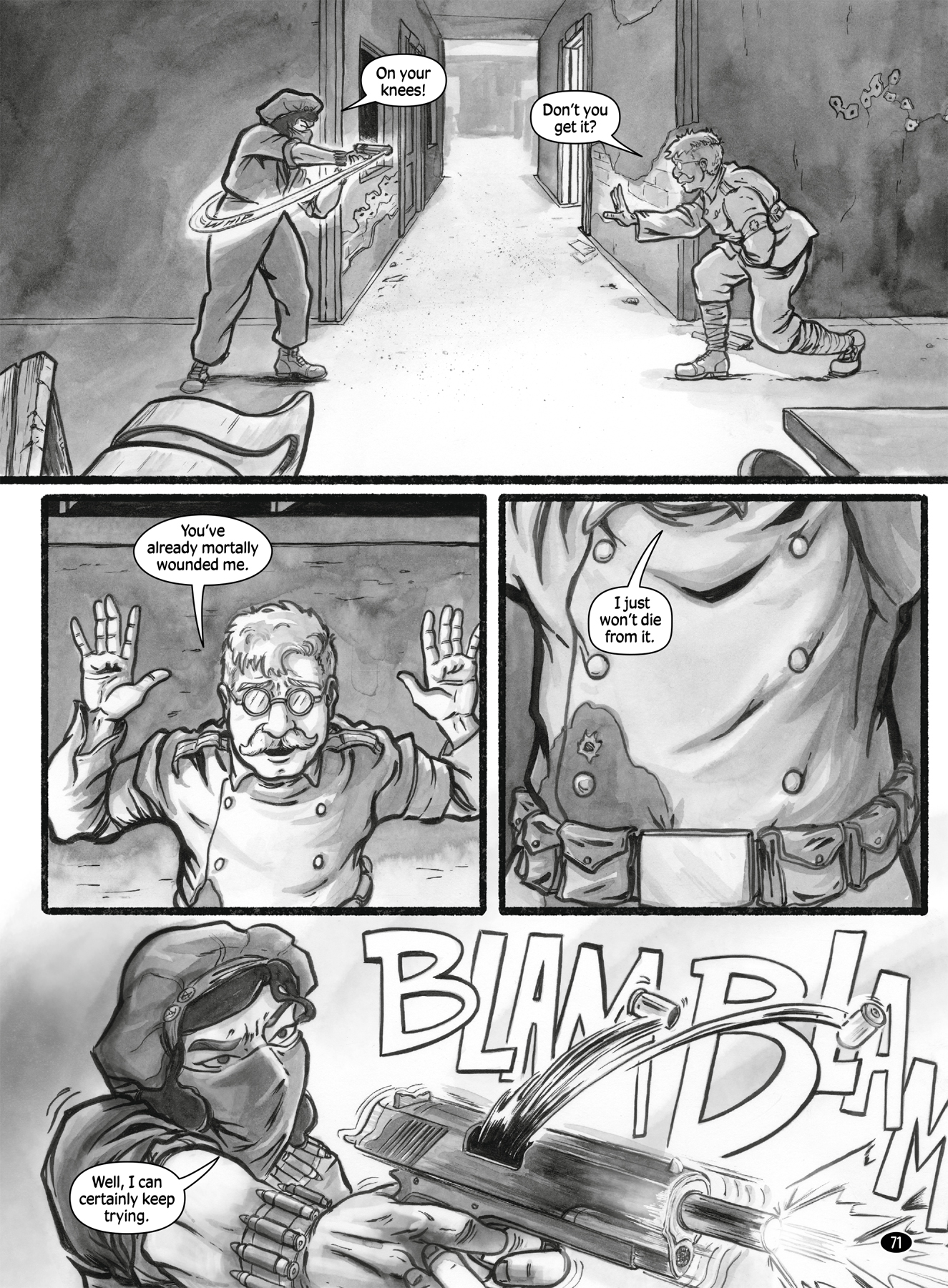
How would you describe the visual style of Death Strikes: The Emperor of Atlantis??
"Hoo boy, that is a really good question. I've described the process as monochrome watercolor painting, which indicates a lot about how I was thinking as I laid in the ink wash.
"The ink had to occupy the full range of values in any given scene, not just a black and a midtone or two. That also had to support the drawing style itself, which I hope trends more towards realism, while taking advantage of the stylisation that comics tradition offers.
"In that way I looked a lot towards artists like Tyler Crook and Bill Watterson, who stylise certain aspects of their human figures, but set them in exquisitely-rendered environments that might be drawn from life. Of course, it landed somewhere in the middle, where gritty and polished meet."
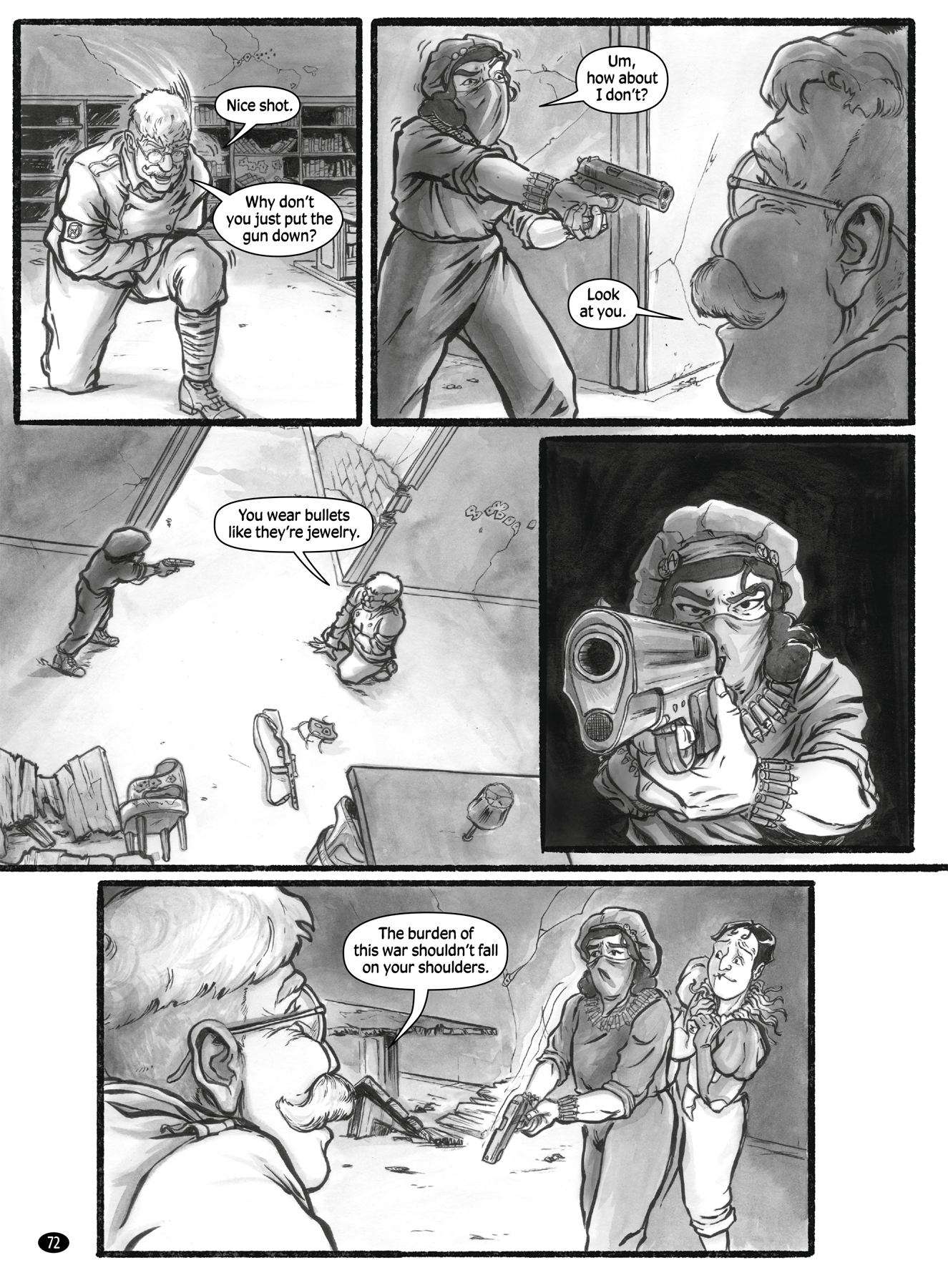
What inspired the design of your Atlantis?
"The largest inspiration was the city of Terezin as it is today. We visited Prague and Terezin as I was doing thumbnails, when the geography of the spaces hadn't been set yet. Standing in the places that Kien and Ullman had lived and worked, it seemed right to bring as much of that environment into the book as possible.
"I had imagined a much more sci-fi setting initially, something bordering on steam punk, to sell the anachronism of the world. I abandoned all of that as soon as I saw the shape of Terezin from overhead. The city was also a military fortress and has these large, triangular bulkheads meant to break up invading forces.
"A man-made valley sit between the inner and outer wall that could be flooded to form a moat, underground tunnels looped the entire city to move troops, ammunition, and supplies. Everything that made it a strong fortification also made it an ideal prison. Immediately I knew this could be Atlantis–pushed and pulled to impossible proportions, but still recognisable."
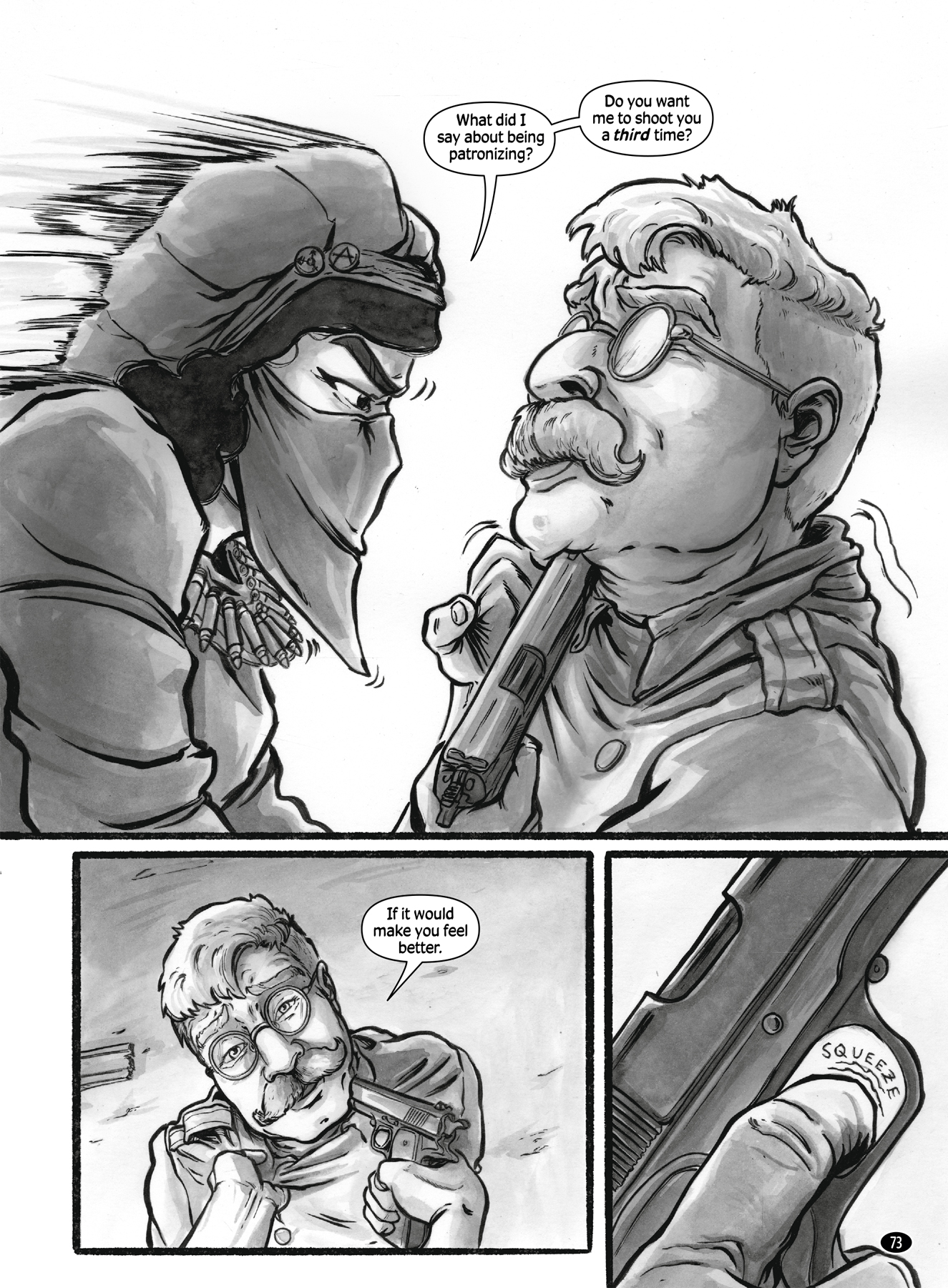
Can you take us through your process?
"The comics start with the script; crawling through, reading and re-reading. Thumbnails (or layouts) would be next–rough drawings that set the number panels, camera angles and placement of text. I always fully letter my thumbnails, so I can identify challenges early on and adjust my designs accordingly.
"Editor Karen [Berger] and I agreed to thumbnail the entire book before we drew a page, to be sure that all of the story and pacing elements were right. This took way longer than I planned, but I am so glad. I learned a ton and we expanded the page count, with Dave [Maass] coming in to flesh out the storytelling.
"I penciled the book digitally in Procreate, using a template that I built in Photoshop to keep my page dimensions and bleed intact. I really enjoyed penciling onto an iPad but my future projects will probably end up in another program like ClipStudio Paint [all these are in our list of the best digital art software].
"Once the pencils were dialled-in (mind you, this process requires that I pencil as minimally as possible–monoline and no indication of shadow or value) I print them onto 13" x 19" sheets of watercolor paper. Too much toner on the sheet makes a resist that disrupts the ink wash, which is why my pencils have to be so spindly. Plus I get the freedom to make lighting choices on the page, which I love.
"From here the process is primarily analog, using Dr. Ph Martin Black Star ink and ol' Winsor & Newton Series 7 brushes to do my line art, following up with ink wash. A Copic tech pen made several appearances, but this project never saw me break out a nib.
"The process ended up being a lovely marriage of digital and analog, which is the dream."
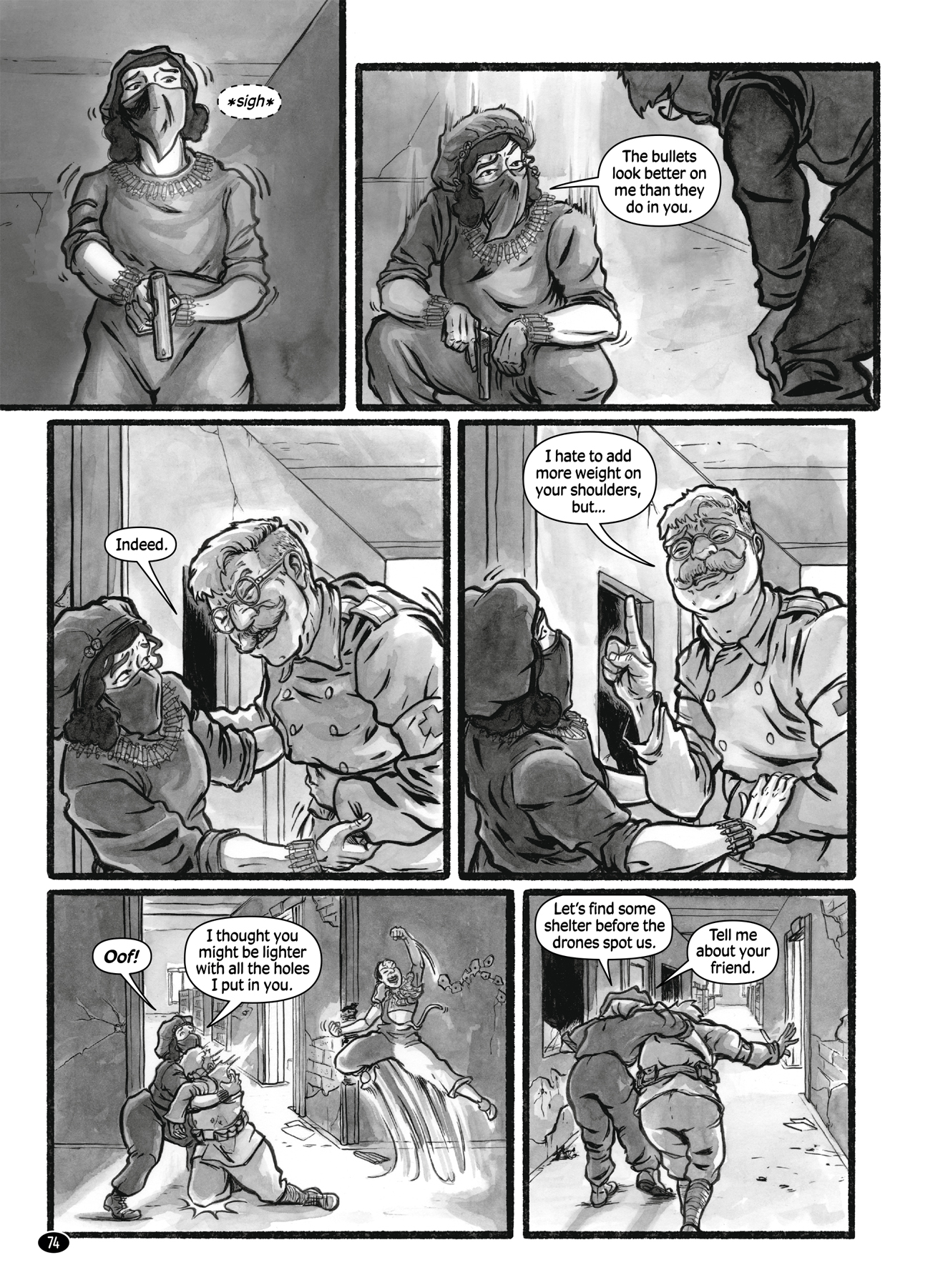
Neil Gaiman said, "it's a reminder of what art is for, and how it saves and shapes us when everything else is gone." How do comments like that affect you?
"It's kind of surreal, you know? We made a book we are proud of and you think, "Wow, this could be pretty good," but as the person who made it, you also see all the places you fell short of your intentions.
"When you are on the inside of a project, it is hard to see with fresh eyes the way a new reader will. What mistakes did you miss? What do you see that no one else will? Having Neil Gaiman, my all-time favourite writer, say something so kind and so specific about Death Strikes is, I don’t know, I'm not sure there are words for how it affects me."
How important are comics and comic art to telling modern stories?
"That's an interesting question, because it asks about modernity. Comics are a medium, with the wide potential of any medium. Modern stories have benefitted from an increased sophistication in comics storytelling, but that isn't intrinsic to comics themselves. Comics could always have been sophisticated (and I would say, always have been in their special way.) It is society and the art world that is catching up to the potential of comics, not the other way around.
"As far as modern stories go, comics do have the incredible advantage of being so damn adaptable. The basic tools that make comics work don't require a strip, or a book, or even paper. As we change the way we interact with stories, comics can adapt alongside us."
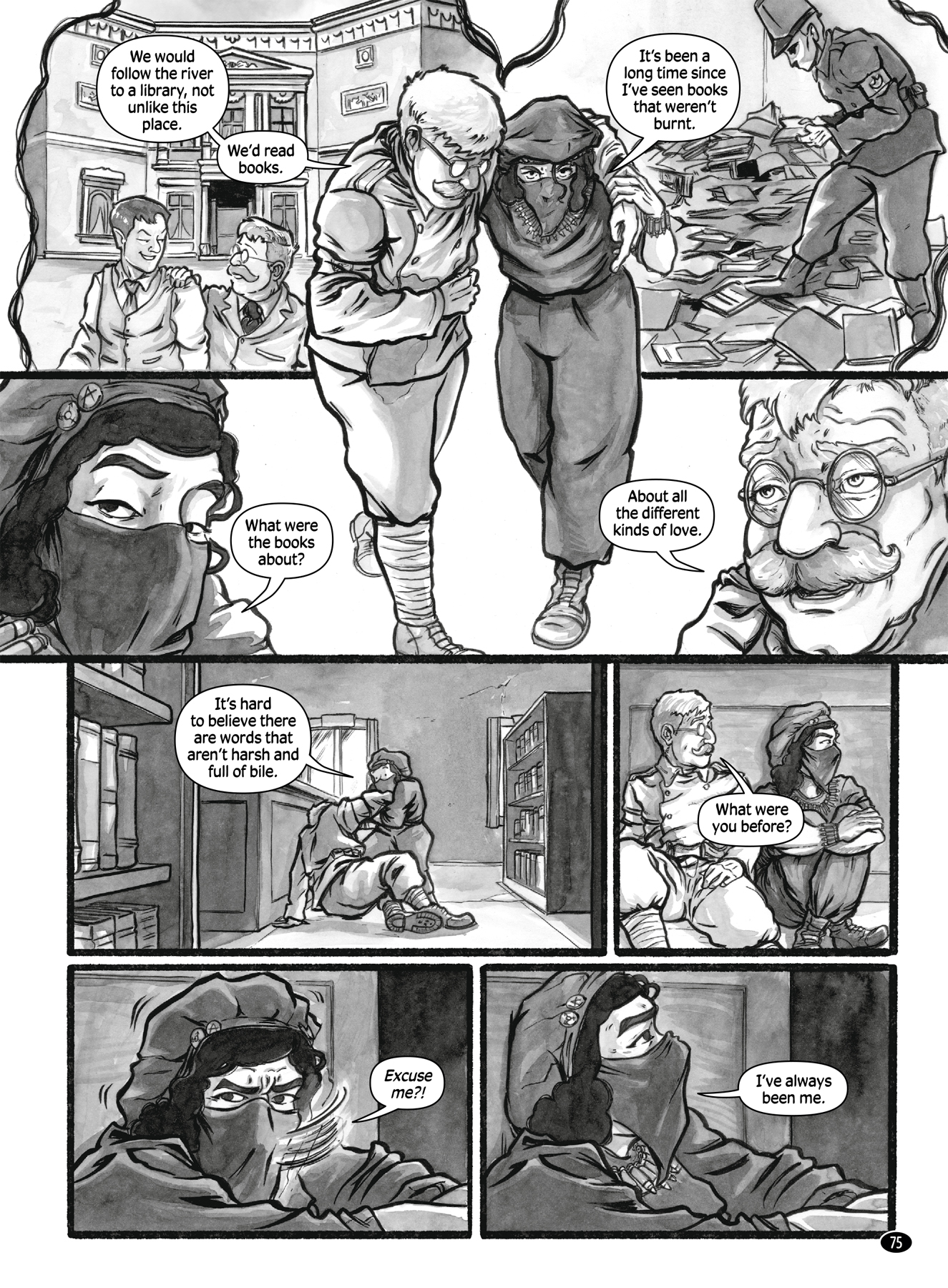
What advice can you offer to people who want to get into art?
"I suppose my thoughts trend in two directions: 1) Art is broad and we make it, consume it, assess it, in so many different ways. Don't get caught in narrowness, make sure to break out from time to time and find out what is outside your immediate area of interest. Be an art tourist for a while, try different techniques, explore different mediums. 2) Be a lifelong artist, first. If you want a career in art, I want that for you too, but I also want you to have the catharsis of making something. I hate to see people give up art as a practice, because they can't do art as a job."
When creating a project like Death Strikes is there added pressure, because of the source material?
"Of course, [laughs]. When you enter a project like this, every person involved becomes a steward for the material, the history, the memory. Keeping your ears open is essential – both so you can improve the work and so you can be respectful of the material.
"It was important to each of us to embody the intent of the piece, as far as we could understand it, so when we made changes or added material we were still in the spirit of the original piece; serving the same goals.
"One of the strange things about the opera is that it was created during World War 2 but it wasn't exactly about World War 2, at least not only World War 2. Ullmann had served in the military during World War 1, and that informed a lot of Der Kaiser. So we had to tread a strange line: we knew more about what was happening in hindsight than they may have in the moment. How do we honour their moment, while acknowledging all they couldn't have known?"
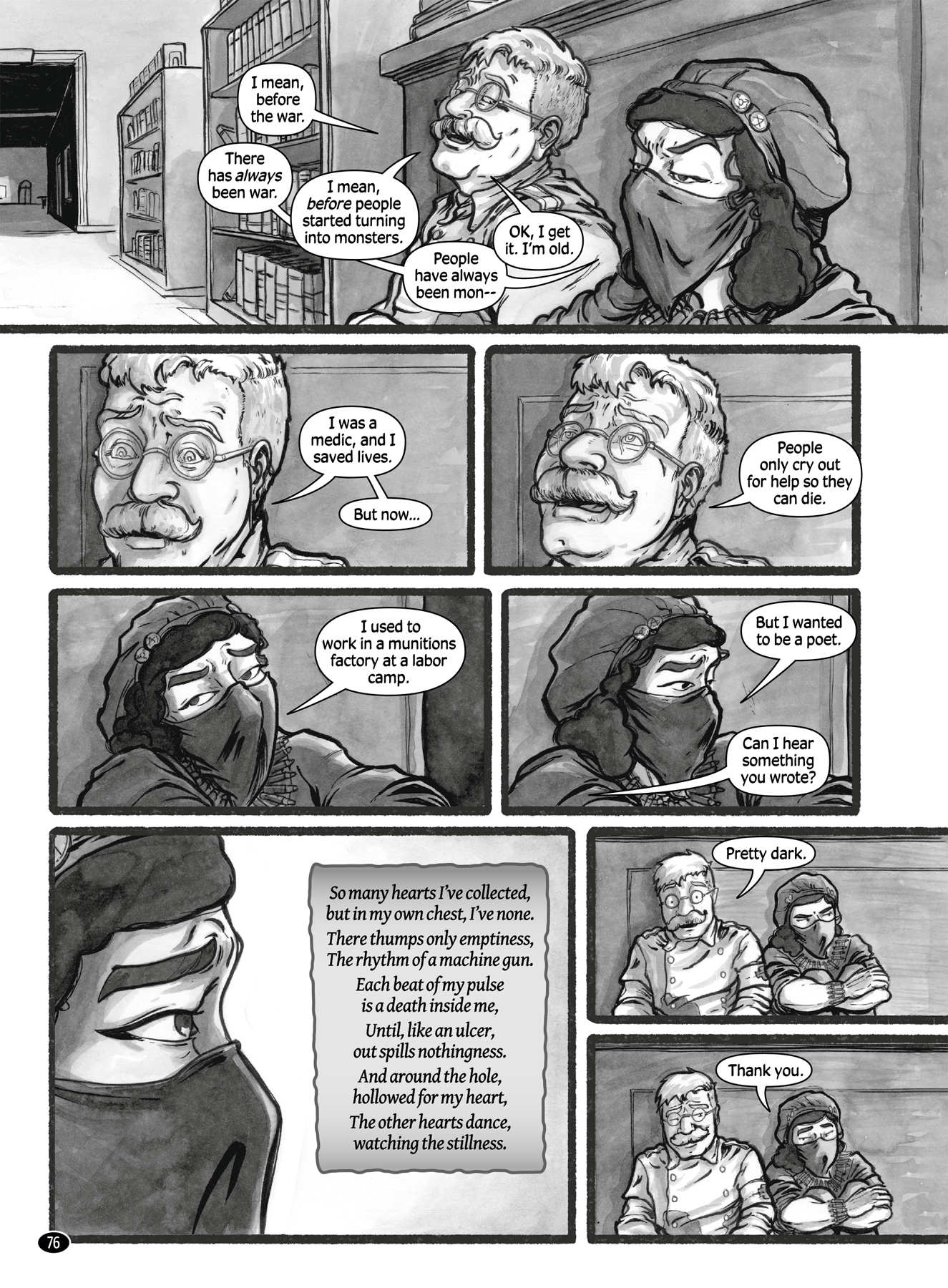
Is there a simple exercise or approach to creating art you've found helpful?
"The tenant I adhere to most is "Learn to work scared" [he laughs]. Some people are very confident in their abilities, ready to take on any new challenge, sure that they can do it. I am not those people, [laughs again], so I have really focused on working even though I am scared it won't come out the way I'd like it to. Keeping that paralysis at bay has been really key to making intimidating projects happen.
"Now, you probably won't do your best work while you're scared: starting from a place of fear is not a great place for art. But at least you have something and that something can be edited, re-worked, re-thought. Even if all of it is bad, you've now eliminated a bunch of options and gotten a lot of bad work out of the way. The only way from there is up, into higher quality, better emotional state, and, hopefully, your best work."

Thank you for reading 5 articles this month* Join now for unlimited access
Enjoy your first month for just £1 / $1 / €1
*Read 5 free articles per month without a subscription

Join now for unlimited access
Try first month for just £1 / $1 / €1

Ian Dean is Editor, Digital Arts & 3D at Creative Bloq, and the former editor of many leading magazines. These titles included ImagineFX, 3D World and video game titles Play and Official PlayStation Magazine. Ian launched Xbox magazine X360 and edited PlayStation World. For Creative Bloq, Ian combines his experiences to bring the latest news on digital art, VFX and video games and tech, and in his spare time he doodles in Procreate, ArtRage, and Rebelle while finding time to play Xbox and PS5.
